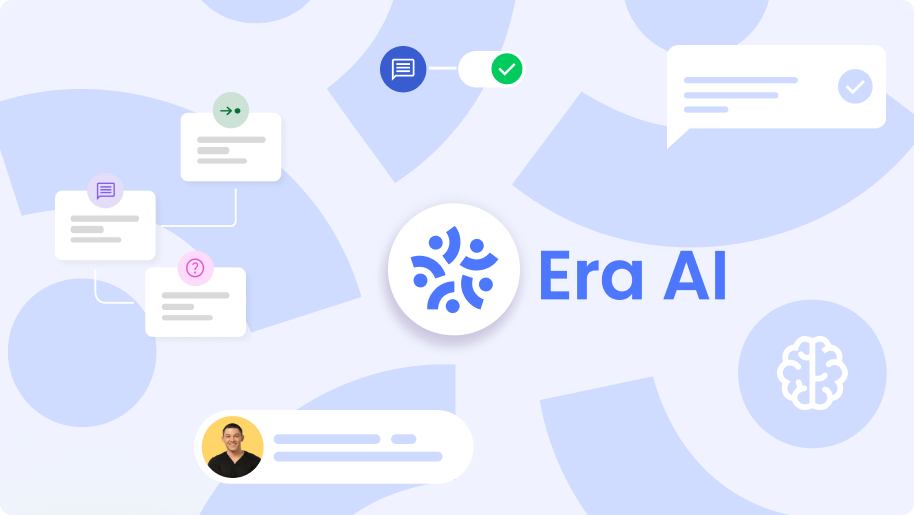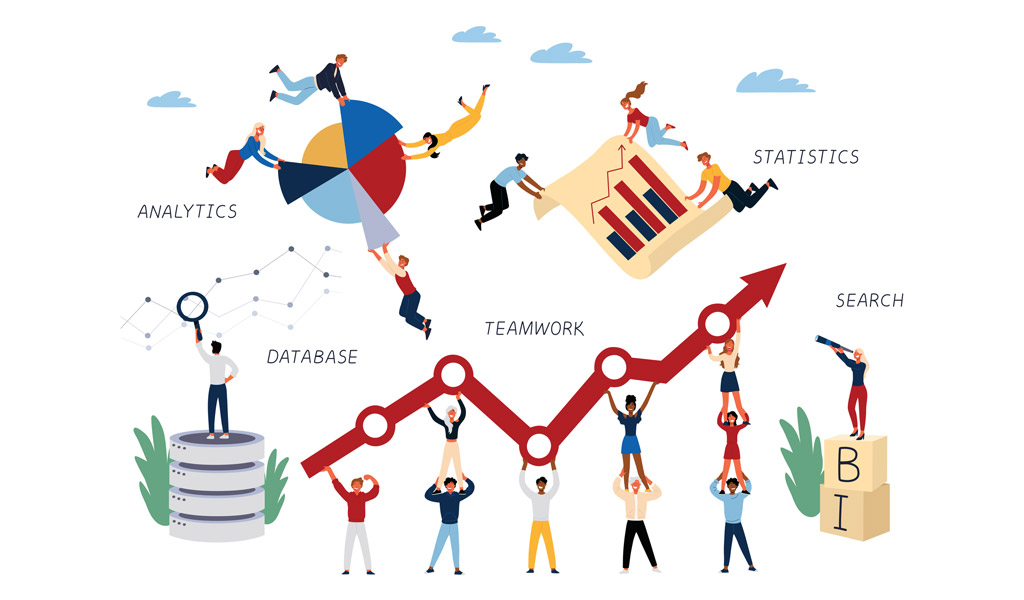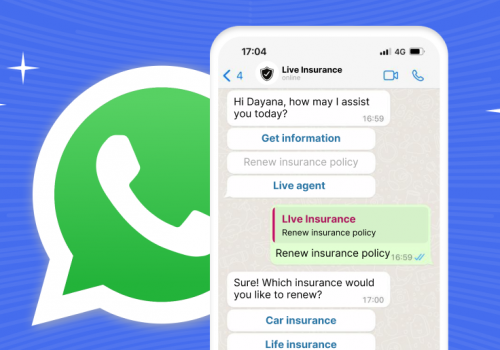Business Intelligence. It should come as no surprise that customer experience is one of the leading ways companies compete in 2020. This will continue into 2021, 2022, and the following years. It’s now the new standard for how businesses operate. But yet, exceptional customer experiences are still the exception. Many customers still report feeling unsatisfied with their experience with the companies they buy from. A key reason behind this could be the lack of business intelligence used in CX decision making.
Most companies want to provide a better experience for their customers, but many don’t know how to go about it. Confused leaders may decide to implement solutions they think they would want, rather than what they know the customer wants. They might have little data to work with and make decisions based on poor or incomplete data sets. This can lead to extremely poor results and many confused faces when these new CX solutions don’t work.
BI in customer experience is about removing the guesswork. It’s about using the data you already have, or can start generating quickly, to inform meaningful change for your customers. With that in mind, let’s take a look at why you should use business intelligence in customer experience.
What is Business Intelligence?
Business intelligence leverages software and services to raw data into actionable insights that drive business decisions. Today, companies are creating more data than ever before. In fact, it’s predicted that we will make more data in the next three years than we have in the last 30 years. This staggering statistic goes to show just how much data we are making every single day. There’s something to be learned from almost all data we collect, whether that’s insights into customer behavior or business productivity and inefficiency.
Reporting is a crucial part of business intelligence, and BI officers will regularly create reports and dashboards that can help the wider business and decision-makers take action.
So, is business intelligence the same as business analytics? Yes and no. It depends on what definition you’re using and who you ask. However, where people do distinguish between the two, it’s usually on the basis of “looking back” or “looking forward.” Business analytics is focused on looking back. BI is about analyzing where the company is today and where it was in the past. It’s interested in how we got to where we are today, and whether we should continue doing what we’re doing or make changes. Conversely, data analytics, or business analytics is often focused on predictive modeling and techniques. Data analytics focuses on using current and historical data to predict what might happen in the future and help businesses prepare for that outcome or avoid it entirely.

8 Reasons to Use Business Intelligence to Improve Customer Experience
1. Visualization
Humans are inherently visual creatures and being able to “see” something just helps it click for us in a way that our other senses just can’t compete with. Businesses generate truly staggering amounts of customer data, and much of this can be used to inform decisions about customer experience. Here are just some of the customer experience data types that forward-thinking companies collect:
- CSAT – Customer satisfaction scores. This is when you get your customers to rate you on a simple scale of 1-5, or maybe even 1-10.
- Customer surveys – Creating effective surveys is a great way to understand what your customers think and feel about your business. Do you make their life easier? Is your app too hard to use? Do you offer a painless customer journey?
- Social listening – Are you monitoring each time your company is mentioned on social media? If you’re not, then you should be. Social listening tools are a great way to protect your reputation and calm angry customers before their public complaints gain too much traction.
Sometimes we need to see this data in a visual format to truly understand it. Just have numbers on a page often isn’t enough. With BI software, you can use dashboards and create intelligent reports that bring the most critical data to the front. Just a quick glance at the dashboard can remind you of what you need to focus on and how to get there.
2. Creating a Data-Driven Culture
By focusing on business intelligence in your customer experience function, you can create a broader appreciation of BI across the business. Business Intelligence has been shown to boost company success, and if you are using it to boost success in customer experience, you’ll have key data you can show senior employees on how successful the project has been.
Companies that have a more data-driven mindset overall are more successful. Again, this is about removing the guesswork. It’s about putting you on a path lead by evidence and one you can be confident is going to give you results. Every team benefit from this.
3. Smash Sales and Marketing Goals
One of the key benefits of improving customer experience is that you see increased sales. When customers are happier, they spend more money on each purchase and also buy from your company more frequently. If that’s not enough, then consider that they also tell their friends and family about their experience and drive more customers to your business. The foundation of great customer experience is fostering loyalty. Your loyal customers spend a lot of money on your products, and they become your brand promoters.
Every company has their own sales and marketing goals, and often these goals can feel overwhelming to staff. It’s one thing to say, “you need to get X amount of sales this quarter.” But putting that into action is a different thing entirely. With BI software, you can see exactly what parts of your marketing are successful and which are not. You can focus more time, attention, and resources into marketing campaigns that are proven to be effective and boost your sales without doing much extra work. It’s a no brainer.
4. Get a Deeper Understanding of Your Customers
When you start working with BI solutions and become deliberate about collecting customer data, you start to understand your customers. Many companies think they understand their customers, but in reality, they don’t. It’s only by spotting patterns that you find things you would never have figured out by yourself.
It’s essential that you work hard to understand your customers on a deeper level because we can guarantee that your competitors are. When you understand what your customers like, feel, and want, you can start to deliver the services that exceed their expectations. However, you could be in trouble if your competitors get there first.
The world today is different from a decade ago or two decades ago. It’s fiercely competitive for businesses out there, but just trying to sell harder is no longer an option. Consumers today are more resistant to being sold to. They hate a hard sell; they hate being pitched to. They just want to see the value in your products through the experiences of people like them. This is why reviews and word of mouth marketing are still such an essential part of business in 2020. Without having the option of calling your customers up repeatedly to try and sell to them, you need to find other ways to bring them to your company.

5. Easier and Faster Reporting
You’re never done creating the perfect customer experience strategy. Customers are constantly evolving and their expectations constantly changing. You can create a customer experience strategy today, but in 5 years it may no longer apply to most consumers. Of course, this isn’t to say that you shouldn’t make customer experience strategies, but that you should continually assess your data to ensure you’re doing best by your customers.
To do this, you need to have quick and easy access to current data and customer trends. With BI tools, you can generate reports quickly and see instantly whether your customer experience strategy is working, or whether it needs some improvement.
6. Break Down Silos
Silos remain a huge problem in businesses all over the world. Teams become insular and solely focused on their team and their output, often failing to engage with other teams unless necessary. Sometimes there is rivalry or tribalism within teams in the business, and this worsens the problem.
However, with BI tools, you can break down silos and get more teams collaborating on how to improve customer experience or the business as a whole. BI can be used in several functions across the business, including:
- Sales – For visualizing the customer journey from the first contact to after-sales support. You can also create insightful forecasts and reports.
- Monitoring customer service in real-time or over time.
- Finance – QUick visual overviews of company performance for business decision-makers.
- Marketing – Generating critical insights into the success of campaigns and understanding the ROI.
- Production – Identify areas of friction and ways to improve.
- IT – Gathering important data about the health of the IT environment on a dashboard. This can help identify risks ahead of time.
7. Call Center Efficiency
BI tools can help improve efficiency in call centers which will then improve customer experiences. Many customers complain that they have to wait a long time to talk to a customer service agent, or that when they do, the agent was less than helpful. BI tools are used in call centers to display dashboards and report on efficiency in real-time. This can help managers know when staff need more help or attention. It can also help agents stay on track if they can see the goals, they are being measured against right in front of them.
8. Improving Employee Performance
With BI dashboards, employees can see exactly how they are performing by clicking a few buttons. This simply wasn’t possible in the past, and many employees were kept in the dark about their day-to-day performance. Performance matters for all staff, but particularly for customer facing staff because these are the ones who are mostly likely to impact customer experiences.
Many employees are resistant to BI tools because they think their purpose is to tell them off. BI tools shouldn’t be used to pressure or punish employees, but rather to provide them with the tools they need to do their job. When BI tools are paired with omnichannel platforms and data-driven tools, employees become empowered in their role.




















